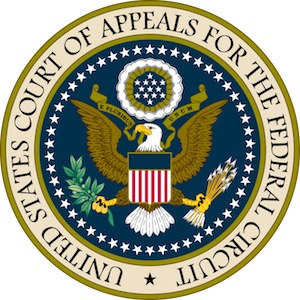EDITORIAL NOTE: Earlier today the United States Supreme Court requested the views of the Solicitor General in RPX Corporation v. Chanbond LLC, another case dealing with standing to appeal final written decisions in IPRs. For more on that case please see NYIPLA Files Amicus Brief.
______________
 On Tuesday, September 18, 2018, Askeladden L.L.C. (“Askeladden”) filed an amicus brief supporting Appellant’s Petition for Rehearing and Rehearing En Banc in JTEKT Corp. v. GKN Automotive Ltd., No. 2017-1828 (Fed. Cir. 2018). See Patent Quality Initiative’s website for the full brief. This case raises the important question of whether the Court of Appeals for the Federal Circuit (“Federal Circuit”) can refuse to hear an appeal by a non-defendant petitioner from an adverse final written decision in an inter partes review (“IPR”) proceeding, on the basis of a lack of a patent-inflicted injury-in-fact, when Congress has statutorily created the right for “dissatisfied” parties to appeal to the Federal Circuit.
On Tuesday, September 18, 2018, Askeladden L.L.C. (“Askeladden”) filed an amicus brief supporting Appellant’s Petition for Rehearing and Rehearing En Banc in JTEKT Corp. v. GKN Automotive Ltd., No. 2017-1828 (Fed. Cir. 2018). See Patent Quality Initiative’s website for the full brief. This case raises the important question of whether the Court of Appeals for the Federal Circuit (“Federal Circuit”) can refuse to hear an appeal by a non-defendant petitioner from an adverse final written decision in an inter partes review (“IPR”) proceeding, on the basis of a lack of a patent-inflicted injury-in-fact, when Congress has statutorily created the right for “dissatisfied” parties to appeal to the Federal Circuit.
Askeladden supported the merits of JTEKT Corp.’s (“JTEKT”) underlying petition, including JTEKT’s argument that the Court should grant rehearing en banc to address injuries beyond patent-inflicted injuries. Specifically, Askeladden agreed with JTEKT’s assertions that the estoppel provisions of the IPR statute independently constitute a real and substantial injury sufficient to establish standing between competitors and that the panel’s decision is contrary to statute and precedent. Askeladden argued that it believes that the Federal Circuit should rehear the issues presented en banc to clarify the law of standing for petitioners on appeal from an adverse finestoppejh;hjg’lhk;glkh;hgal written decisions of the PTAB in IPRs.
In the proceedings below, JTEKT filed a petition requesting IPR, pursuant to the relevant statutory scheme devised by Congress in the America Invents Act, 35 U.S.C. §§ 311-319. The PTAB later issued a final written decision, holding the challenged claims of the patent not unpatentable.
JTEKT then filed to appeal the PTAB’s decision to the Federal Circuit, to which GKN Ltd. (“GKN”) moved to dismiss the appeal for lack of Article III standing. JTEKT had the burden to demonstrate some injury resulting from the PTAB’s decision. JTEKT submitted two declarations in support of its standing. Although JTEKT couldn’t definitively say whether it would infringe the patent, JTEKT argued that the general features were similar and the “patent posed a risk to future development.” JTEKT Corp. v. GKN Auto. Ltd., 898 F.3d 1217, 1221 (Fed. Cir. 2018). Ultimately, the panel held that JTEKT failed to establish an actual injury sufficient to confer Article III standing because “the[] declarations [did] not establish that [JTEKT’s] planned product would create a substantial risk of infringing [the] patent or likely lead to charges of infringement[.]” Id. Further, the panel did not agree with JTEKT’s argument that the “creation of estoppel based on [JTEKT’s] participation in the IPR constitute[d] a separate, and independent, injury[.]” Id. Therefore, the appeal was dismissed.
In its submission, Amicus Curiae Askeladden L.L.C. advocated in support of the Appellant’s Petition for Rehearing and Rehearing En Banc based on the grounds that there is “little question” that JTEKT is the “object” of government actions that have caused it multiple injuries, including: (1) the PTAB’s allegedly improper denial of JTEKT’s statutory right to request cancellation of claims 2 and 3; (2) the estoppel that attached to JTEKT as a result of these allegedly improper denials; and (3) the intangible injury defined by Congress of being “dissatisfied” with the allegedly improper Government action on JTEKT’s petition.
The following are excerpts taken from the brief addressing Points 2 and 3 above.
________
III. Estoppel Is an Injury-in-Fact
Notwithstanding the forgoing Supreme Court precedent, the panel further misapplied the law in finding that JTEKT does not have standing to appeal because it allegedly failed to suffer any an injury-in-fact. To the contrary, JTEKT also suffered a tangible injury-in-fact from the estoppel that has attached as a result of the PTAB’s adverse final written decision.
To establish Article III standing, a party must show, inter alia, that it has suffered an injury-in-fact. Lujan, 504 U.S. at 560–61; see also Spokeo, 136 S. Ct. at 1547. In this regard, the appellant must show that it “suffered ‘an invasion of a legally protected interest’ that is ‘concrete and particularized’ and ‘actual or imminent, not conjectural or hypothetical.” Spokeo, 136 S. Ct. at 1548 (citing Lujan, 504 U.S. at 560). A concrete injury can be “tangible” or “intangible,” and an injury is particularized if it affects the appellant “in a personal and individual way.” Id. at 1549.
There is no question that the estoppel provisions of the IPR statute meet these requirements. When a petitioner loses an IPR, its legally protected right to challenge (e.g., in another IPR) the validity of claims found to be patentable is extinguished. This is a particularized tangible injury that is personal and individual to the petitioner. No one else can challenge the PTAB’s decision on appeal, and only the petitioner will be estopped by this allegedly improper decision for the remaining life of the patent.
The panel decision fails to discuss this injury in any meaningful way. Instead, it relies on holdings in Phigenix and Consumer Watchdog that the estoppel provisions do not create an injury-in-fact. (PetApp p. 7). However, in Consumer Watchdog, the Court merely stated was that the “‘conjectural or hypothetical’ nature of any injury flowing from the estoppel provisions’” do not create standing, without more. 753 F.3d 1258, 1262–63 (Fed. Cir. 2014) (citations omitted).
But there is nothing conjectural or hypothetical about the estoppel provisions. Once a final written decision issues, estoppel immediately kicks in (if the petitioner is not permitted to appeal). The petitioner will thereafter be estopped from ever challenging upheld patent claims, even when the PTAB’s decision is clearly erroneous. By the same token, the patent owner greatly benefits from the injury to petitioner. It can unfairly sue petitioner for patent infringement without facing invalidity arguments based on published prior art (even if the PTAB’s decision would have been overturned had petitioner been permitted to appeal).
The Federal Circuit has found under similar circumstances that the preclusive effect of an adverse final decision confers standing on a party:
A party shows standing to appeal by demonstrating . . . that it suffered some actual or threatened injury as a result of the appealed action. . . . The threat of an unfavorable determination in future litigation due to the res judicata effect of an adverse judicial determination may be such an injury.
Nat’l Presto Indus. v. Dazey Corp., 107 F.3d 1576, 1579 (Fed. Cir. 1997).
In this regard, the estoppel provision of the IPR statute is no different than res judicata.
IV. Congress Defines Dissatisfaction in Section 319 as a Sufficient Intangible Injury to Confer Standing on JTEKT to Appeal Here
While “Congress cannot erase Article III’s standing requirements by statutorily granting the right to sue to a plaintiff who would not otherwise have standing,” nonetheless, “[i]n determining whether an intangible harm constitutes injury in fact, both history and the judgment of Congress play important roles.” Spokeo, 136 S. Ct. at 1548–49.
As the Supreme Court has held, Congress may identify intangible harms that meet minimum Article III requirements, and may even “elevat[e] to the status of legally cognizable injuries concrete, de facto injuries that were previously inadequate in law.” Id. at 1549 (quoting Lujan, 504 U.S. at 578).
As Oil States suggests, that is what Congress has done here, by defining an intangible injury as being “dissatisfied” with the PTAB’s final written decision (a government action). 138 S. Ct. 1365, 1372 (2018) (“A party dissatisfied with the Board’s decision [JTEKT in this instance as Petitioner] can seek judicial review in the Court of Appeals for the Federal Circuit. § 319. Any party to the [IPR] can be a party in the Federal Circuit.”); 35 U.S.C. §§ 141(c), 319.
Thus, to the extent that a petitioner’s dissatisfaction with the PTAB’s final written decision may not have been sufficient to confer standing in the absence of the IPR statute, Congress’ enactment of Sections 141(c) and 319 elevated such dissatisfaction to the status of an intangible injury that confers standing upon a dissatisfied petitioner to appeal that decision. As such, JTEKT’s dissatisfaction with the PTAB’s decision is an intangible injury that confers standing for it to appeal. See SAS Inst. v. Iancu, 138 S. Ct. 1348, 1355 (2018) (“‘Just as Congress’ choice of words is presumed to be deliberate’ and deserving of judicial respect, ‘so too are its structural choices.’” (citations omitted)); Cuozzo Speed Techs., LLC v. Lee, 136 S. Ct. 2131, 2140 (2016) (recognizing a “strong presumption” in favor of judicial review).

![[IPWatchdog Logo]](https://ipwatchdog.com/wp-content/themes/IPWatchdog%20-%202023/assets/images/temp/logo-small@2x.png)

![[[Advertisement]]](https://ipwatchdog.com/wp-content/uploads/2023/01/2021-Patent-Practice-on-Demand-1.png)



![[Advertisement]](https://ipwatchdog.com/wp-content/uploads/2024/04/UnitedLex-May-2-2024-sidebar-700x500-1.jpg)
![[Advertisement]](https://ipwatchdog.com/wp-content/uploads/2024/04/Artificial-Intelligence-2024-REPLAY-sidebar-700x500-corrected.jpg)
![[Advertisement]](https://ipwatchdog.com/wp-content/uploads/2024/04/Patent-Litigation-Masters-2024-sidebar-700x500-1.jpg)

![[Advertisement]](https://ipwatchdog.com/wp-content/uploads/2021/12/WEBINAR-336-x-280-px.png)
![[Advertisement]](https://ipwatchdog.com/wp-content/uploads/2021/12/2021-Patent-Practice-on-Demand-recorded-Feb-2021-336-x-280.jpg)
![[Advertisement]](https://ipwatchdog.com/wp-content/uploads/2021/12/Ad-4-The-Invent-Patent-System™.png)






Join the Discussion
7 comments so far.
Jonathan
October 2, 2018 04:02 pmEstoppel as an Injury-in-fact is a run down a rabbit hole because of Spokeo’s Art. III requirements and Lexmark’s new statutory interpretation rule based on Data Processing requirement of “arguably within the zone of interests to be protected or regulated by the statute”. Estoppel as an Injury-in-fact would never satisfy the zone of interest test established in Data Processing. In the Data Processing decision the Court discarded the “legal interests” test for standing, whereby a party must assert an invasion to “a legal right – one of property, one arising out of contract, one protected against tortuous invasion, or one founded on a statute which confers a privilege”- as “going to the merits” of the case and inconsistent with both the requirements of Article III and “the trend … toward enlargement of the class of people who may protest administrative action.” What ultimately took the place of this prior “legal interest” test based on Data Processing was the two-part, injury-in-fact and zone-of-interests test; with the former element reflecting traditional aspects of Article III standing, and the latter element reflecting the modem reliance on statutory causes of action. Arguing estoppel as an Injury-in-fact is resurrecting the “legal interest” test, that Data Proceeding discarded.
Anon
October 2, 2018 03:23 pmB,
It’s the same “principle” as previously advanced (and that is, that Congress abrogated the Article III standing by creating a dual-forum methodology, not requiring ANY standing in the first half of that dual-forum adventure and then bootstrapping the standing-less portion into a “waiver” of standing in the second half of that dual-forum adventure.
“Renaming” what is being done does not change what is being done.
Congress knee full well that they were creating a mechanism without standing for the initial portion. Doing so does not – and cannot – abbrogate what is required for Article III standing (which has not changed).
Anon
October 2, 2018 01:17 pmThanks Jonathan,
Your post is a welcome addition.
B
October 2, 2018 10:47 amanon, I most respectfully disagree.
I see this as far more nuanced. Estoppel as an injury-in-fact is an interesting legal theory.
Jonathan
October 2, 2018 10:39 amHere is the support: the Art III injury in fact inqury for standing on appeal must be based on the effect of the final agency adjudication and not on the patent-in-dispute. See INS v. Chadha, 462 US 919, 930 (1983) (Burger, C.J.) (6:3) (At least for purposes of deciding whether the INS is “any party” within the grant of appellate jurisdiction …, we hold that the INS was sufficiently aggrieved by the Court of Appeals decision prohibiting it from taking action it would otherwise take.”); same Knight v. Alabama, 14 F.3d 1534, 1556 (11th Cir. 1994) (“The primary limitation on [a litigant’s] appellate standing is the adverseness requirement which is one of the rules of standing particular to the appellate setting. Only a litigant `who is aggrieved by the judgment or order may appeal'” quoting Dairyland Ins. Co. v. Makover, 654 F.2d 1120, 1123 (5th Cir. 1981);
Jonathan
October 2, 2018 09:56 amNice summary but there is a different way to look at it. There are two distinct line of cases: first, Congress may enact statutes creating legal rights, invasion of which creates standing; in other words: the Legislature/Congress create rights. Invasions of those rights are injuries-in fact. The second line of cases stands for the preposition that there is “a hard floor of Article III jurisdiction that cannot be removed by statute”. Both lines of cases go back to the early 1910s. Until Spokeo, the most famous case which brought both lines in direct conflict was in First American Financial Corp. v Edwards, (2012). Seven months after its oral argument, the Court dismissed the case as improvidently granted. There were rumors that it was “dismissed” because the assigned opinion writer for the majority was Scalia, who had just died. To attempt to ease that long and standing tension between these two lines of cases, the Court’s opinion in Spokeo v. Robins introduced a new emphasis; courts needed to focus on asking whether the statutory injury was “concrete.” The word “concrete” had appeared in the Court’s Art. III standing cases before. Lujan had described an Art. III “injury in fact” as being “an invasion of a legally protected interest which is (a) concrete and particularized, and (b) actual or imminent, not conjectural or hypothetical.” So did Summers. But the word “concrete” had not before been given any independent definition or distinct meaning in the Court’s Art. III standing doctrine. The Supreme Court’s opinion in Spokeo first explained that “concreteness . . . is quite different from particularization.” Prior cases had used these two terms interchangeable. The Spokeo Court goes on to say that not all (legal) injuries-in-fact, and not all injuries to defined statutory rights, were per se concrete. A statutory right required something more, so Alito. But as to what more, exactly, was required, the Spokeo Court was very unclear. Citing dictionaries, Alito for the Majority said that to be “concrete” an injury “must actually exist,” and be “‘real,’ and not ‘abstract.’” But then the Alito goes on say the harm could also nonetheless be “intangible” or based only on the “risk of real harm.” (A brief but important nod to the probalistic standing line of cases). Alito did not explain why some statutory rights are not “real,” especially when some intangible harms apparently can be. This appears to be a little bit of a circular definition. In respect to IPRs Spokeo seems to indicate that no tangible harm has to exist at the time of the notice of appeal; “risk of real harm” is enough. I think with the “concreteness” requirement the court was thinking about data privacy or pure procedural (i.e., due process) violations. The wonderfully understated dissent by Notorious RBG (joined by Justice Sotomayor) noted correctly that the Court’s prior Art. III standing decisions “do not discuss the separate offices of the terms ‘concrete’ and ‘particularized.’” One last thought about Spokeo’s “concreteness” requirement, may be the Court wanted to reign-in on class action law suits, and Spokeo suggests that no class should be certified unless each member has met the “concreteness” requirement of each class member’s standing. As the Court said – both under the competitor standing line of cases and the probabilistic standing line of cases – a “realistic-threat” or “substantial-risk” is enough for the injury in fact; see Susan B. Anthony List v. Driehaus, 134 S.Ct. 2334, 2341 (2014) (9:0) (Thomas, J.) (“An allegation of future injury” is enough to establish standing if “there is a ‘“substantial risk” that the harm will occur.’”); quite educational is also: Clinton v. City of New York, 524 U.S. 417, 432-34 (1998) (6:3) (Stevens, J.) (finding cooperative has standing to challenge veto of tax benefit enacted to foster ability to purchase processing plants) (“By depriving [the plaintiffs] of their statutory bargaining chip, the cancellation inflicted a sufficient likelihood of economic injury to establish standing under our precedents.”) (Probable economic injury resulting from governmental action that alters competitive conditions will satisfy the injury-in-fact requirement.”) (Noting a “sufficient likelihood of economic injury” establishes injury in fact for Article III standing). The Art. III injury-in-fact must be shown in the agency adjudication (final IPR order/ruling) and not in the patent in suit.
Anon
October 1, 2018 01:57 pmThis is a retread of prior assertions — without anything meaningful added in the interim.
Consider then, the rebuttals points as being presented.
Again.